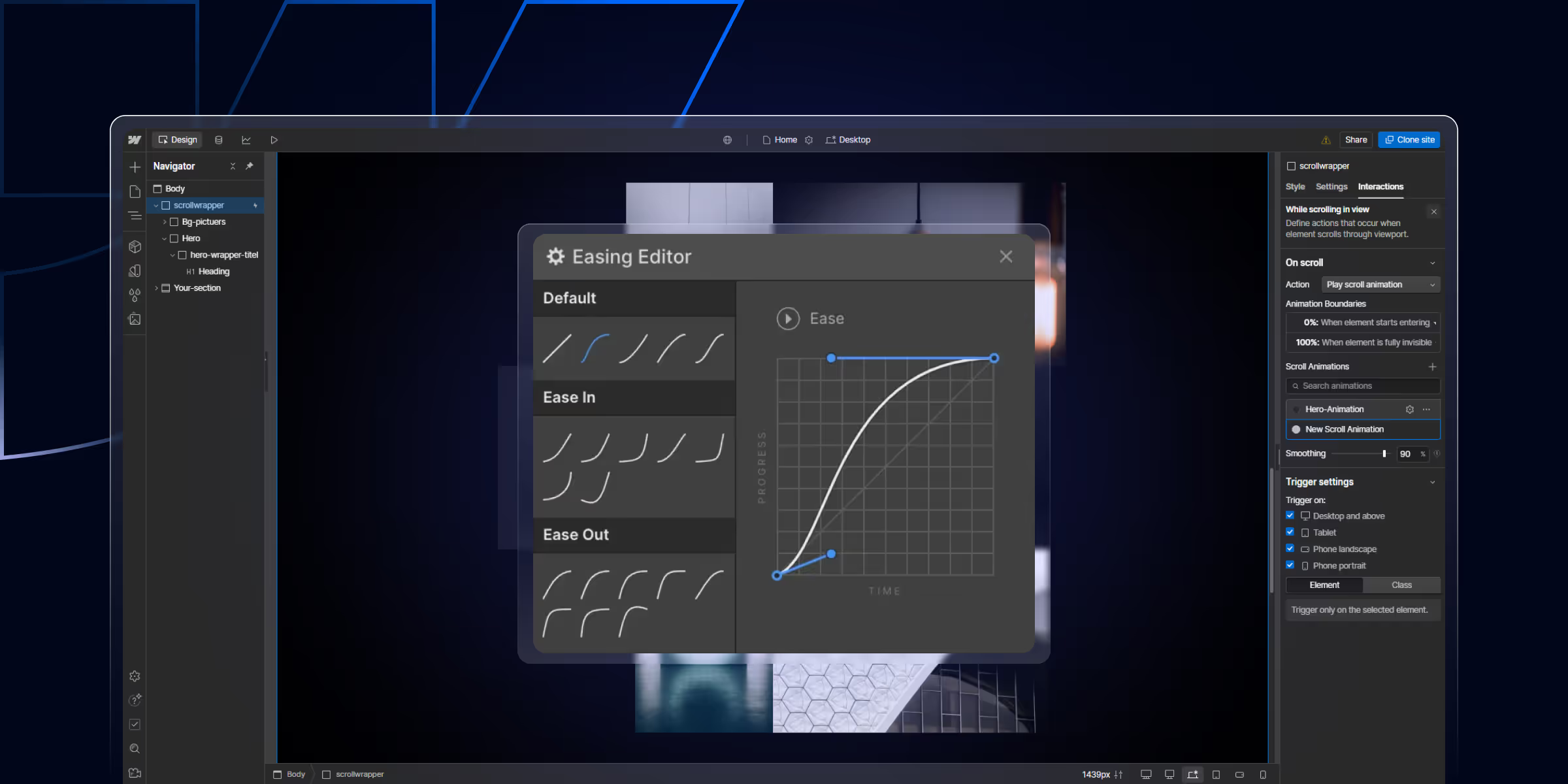5+ Powerful B2B Website Personalization Examples
See how B2B companies are driving success in 2025 with personalized pricing, chatbots, onboarding, and other proven strategies.

Actionable insights to improve SEO, speed, and conversions

Low-code development is a transformative approach that's changing the software development industry. Whether you are a business leader, IT professional, entrepreneur, or someone curious about technology trends, understanding low-code development is now more important than ever.
This technology is not just a key term; it’s reshaping how applications are designed, built, and deployed. Opening up new opportunities for professionals and companies across industries.
Low code is no longer just a tool or platform for small businesses or startups. Enterprises, governments, and agencies are leveraging its power to streamline operations, reduce development backlogs, and empower teams outside traditional IT departments to solve problems creatively.
In this blog post, we break down what low-code development is, how it works, its crucial features, and its game-changing impact on modern organizations.
Low-code development refers to a modern software development approach that minimizes the need to write extensive lines of code. Instead, it relies on visual interfaces, drag-and-drop tools, and user-friendly logic builders to enable the quick assembly of applications. These platforms allow users, sometimes called “non-tech developers” with little to no formal coding experience, to build functional software while also supporting seasoned developers in accelerating their workflows.
At its core, low code overviews the core technical complexity, converting development tasks into manageable steps. This innovation helps bridge the traditional divide between business needs and IT execution.
Traditional software development typically involves hand-coding, requiring in-depth knowledge of programming languages, frameworks, and system architectures.
This can be time-consuming and cost-prohibitive, especially for organizations with limited technical resources. Applications may take months (or years) to launch, and even small changes require developer intervention.
And low-code platforms streamline this process. By offering pre-built templates, reusable components, and visual workflows, they significantly reduce build times and dependencies on specialized coding expertise.
This empowers cross-functional teams to engage directly in the application lifecycle, improving collaboration between business and IT stakeholders.
The key principles that define a low-code platform include:
The foundation of any low-code platform is its visual development interface. These interfaces present users with a canvas that represents their applications’ architecture, combined with menus and toolbars full of drag-and-drop elements.
Instead of scripting or compiling code, users can literally “draw” their apps, connecting data sources, designing screens, and setting up business logic without writing extensive syntax.
Drag-and-drop functionality is central to the user experience. Want to add a form, interactive chart, or data table? Simply drag it from the component library onto your workspace. Configure properties with point-and-click settings, then arrange elements visually.
Workflow and business logic are no longer chained to conditional (if/then) code written in back-end languages. Instead, users can map out actions, responses, and integrations using flowcharts or logic trees that represent the app’s behavior.
Modern organizations depend on multiple systems like CRMs, ERPs, payment gateways, and more. Low-code platforms come with connectors to popular software development services and databases, making data integration seamless. With a few clicks, you can connect your app to external tools, synchronize records, or automate notifications.
APIs (Application Programming Interfaces) are also supported for more advanced or custom integrations, ensuring that low-code apps can operate within a wider digital ecosystem.
Visual modeling is the heart of low-code development. Platform users can model data structures, user interfaces, and business processes using intuitive graphical tools.
For instance, creating a new database table may involve simply dragging fields into place and naming them, rather than writing complex SQL scripts.
Most platforms offer a repository of reusable components, blocks of code for common features like authentication, file uploads, navigation menus, or dashboards.
Templates for whole apps or workflows provide starting points, reducing repetitive build work.
This modularity allows businesses to scale solutions quickly while ensuring best practices are followed across projects.
Security is built into most low-code platforms by default. Access controls, user authentication, data encryption, and monitoring can be configured through straightforward interfaces.
As organizations grow, these platforms often provide the ability to scale horizontally, supporting a rising number of users, transactions, and integrations without a major overhaul.
Low code removes traditional barriers between web, mobile, and desktop deployments. Most leading platforms allow you to build once and deploy everywhere, ensuring your apps run smoothly on a variety of devices. This “write once, run anywhere” principle drastically reduces effort and time-to-market for cross-platform compatibility.
Speed is the greatest advantage of low code. By enabling rapid prototyping, business units can validate ideas, gather feedback, and iterate much faster than with conventional coding approaches.
Many projects progress from concept to deployment in a fraction of the traditional time.
An advantage of low-code is that it enables non-tech developers to build applications. People from non-technical backgrounds, such as operations, marketing, or finance, can contribute to application creation and process automation.
This simplifies software development, closes the skills gap, and distributes innovation across the organization.
Reducing the need for large, specialized IT teams directly results in cost savings. Pre-built functionality, reusable assets, and decreased maintenance requirements all contribute to a lower total cost of ownership (TCO) for software projects.
In today’s business climate, the ability to pivot quickly is vital. Low-code development provides the agility to respond to regulatory changes, customer demands, or market opportunities on the fly.
Applications can be updated, scaled, or integrated with new systems easily, helping organizations stay ahead of the curve.
Organizations use low code to streamline repetitive processes such as onboarding, approvals, reporting, and inventory management. Automating these workflows enhances efficiency, reduces errors, and frees up valuable employee time.
Low-code platforms shine at building customer-facing portals and analytics dashboards without protracted development cycles. Businesses can quickly launch engaging self-service environments for customers, partners, or employees.
Whether it’s surveys, incident tracking, or data aggregation, low-code solutions simplify the design of tailored data intake forms and management systems.
With built-in validation, reporting, and visualization, these apps offer superior user experiences and actionable insights.
The low-code space is diverse, with platforms catering to various needs. Let’s highlight a few of the most popular:
1. Webflow: Exceptional for visually rich, responsive web designs; empowers designers with full control.
2. Squarespace: Best for quickly launching aesthetically appealing websites, especially for small businesses and creatives.
3. WordPress: The world’s most popular CMS; an extensive plugin ecosystem brings low-code functionality to content-driven sites.
4. Wix: User-friendly drag-and-drop editor; robust template library for fast deployment.
Each platform brings unique tools, integrations, and workflows, so the best choice depends on your use case, team expertise, and long-term scalability needs.
The rise of artificial intelligence (AI) and intelligent automation is already reshaping the low-code landscape. Modern platforms are embedding AI-powered features such as natural language processing, automated code generation, and analytics, enabling users to build smarter, context-aware applications with little manual effort.
This trend is expected to accelerate, with low-code platforms becoming gateways for organizations seeking to leverage AI without extensive technical investment.
Low code doesn’t replace professional developers, it raise them. By automating routine, repetitive coding tasks, developers are freed to focus on complex customizations, integrations, and architecture planning.
Hybrid teams combining IT experts and business subject matter authorities will drive the next wave of innovation, supported by low-code collaboration tools.
Low-code development is revolutionizing digital transformation by making software creation accessible, efficient, and collaborative. Whether automating business processes, building customer portals, or prototyping new ideas, these platforms deliver speed, flexibility, and cost savings that traditional development can’t match.
The future of low code is bright, driven by ongoing innovation in AI, greater extensibility, and an ever-growing community of business and technical users. Organizations that embrace low code will find themselves better equipped to innovate, adapt, and thrive in our dynamic digital world.
Now is the time to explore low code development, empowering your team, streamlining your operations, and future-proofing your business for the challenges and opportunities ahead.
theCSS Agency is a leading low-code development service provider, empowering businesses to build powerful, scalable, and user-friendly digital solutions without heavy coding. We specialize in Webflow to create high-performing websites, and digital experiences that drive growth.
Our team helps SaaS, IT, and B2B companies launch projects faster, reduce development costs, and achieve better results with customized low-code solutions. From designing conversion-focused Webflow websites to integrating automation and third-party tools, we make digital transformation seamless.
Partner with theCSS Agency, a trusted low-code development expert, and accelerate your digital journey with solutions designed for speed, flexibility, and business growth.
Low code development is a method of building applications using visual interfaces, drag-and-drop tools, and minimal manual coding.
Traditional development requires extensive hand-coding in various programming languages, which can be time-consuming and requires specialized expertise. Low code platforms simplify the process by providing pre-built components and visual tools, significantly reducing development time and making app creation accessible to non-developers.
Low code development offer faster app delivery and prototyping, Reduced costs due to less resources, Empowerment of non-technical users to solve problems independently.
Yes. While low code platforms enable rapid configuration, they also allow professional developers to add custom code, integrate APIs, and implement advanced features as needed.
Popular options include Webflow, Squarespace, WordPress, and Wix, each catering to different needs, from marketing websites to business applications.

See how B2B companies are driving success in 2025 with personalized pricing, chatbots, onboarding, and other proven strategies.

Learn Webflow automation and how it simplifies workflow design and development. Find tools, use cases, and benefits for the productivity of your Webflow projects.

Learn how to create Webflow interactions and animations without coding. Master scroll effects, hover animations, and click triggers to build engaging, high-converting websites.
Quick Turnaround. No Contracts. Cancel Anytime. Book a 30 minutes consulting call with our expert.